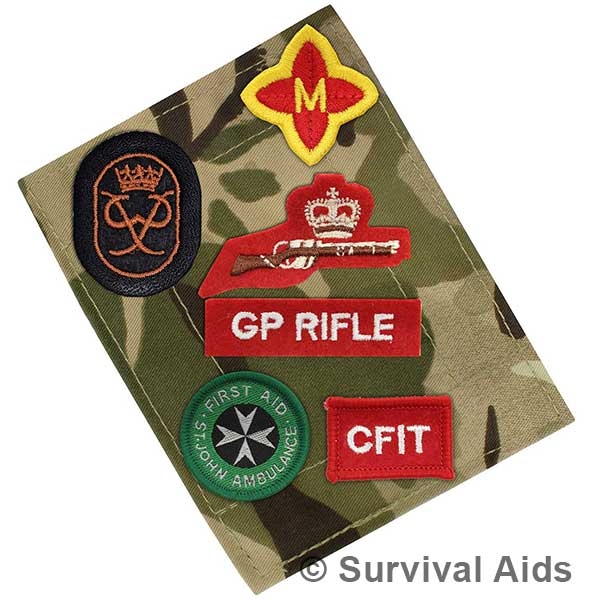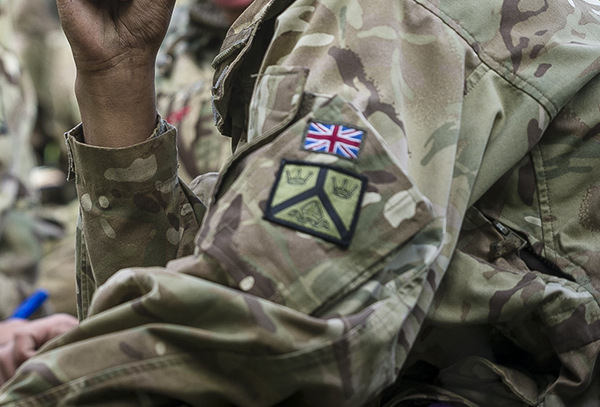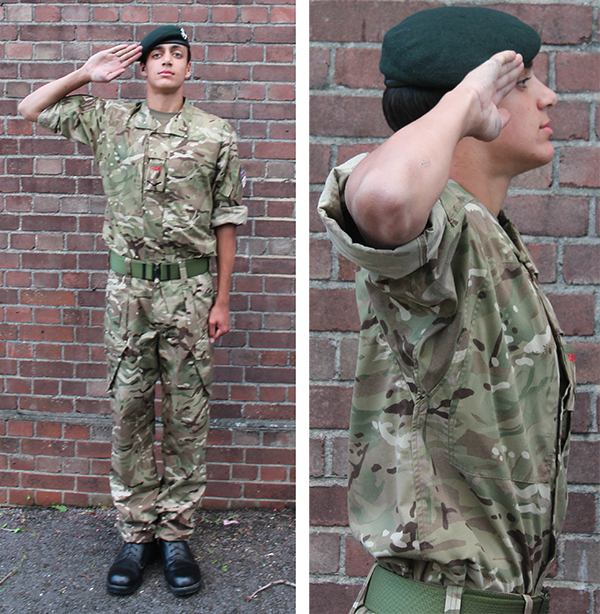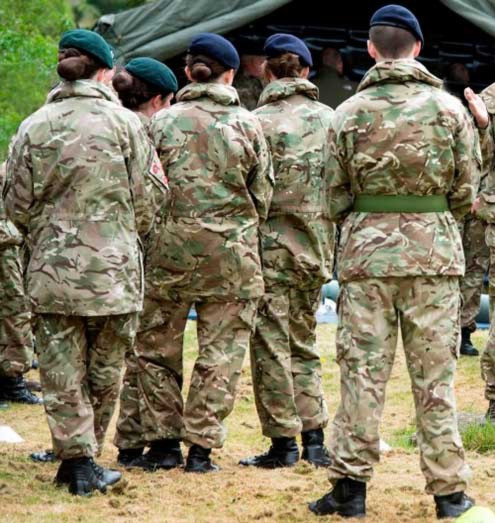A Complete Guide to ACF/CCF Cadet Uniforms, Personal Turnout, and Saluting Etiquette
Cadets in the Army Cadet Force (ACF) and Combined Cadet Force (CCF) are provided with uniforms that are essential to their role. Proper care and adherence to regulations are vital to maintaining the integrity of these uniforms. In this guide, we cover everything from uniform upkeep to personal turnout and saluting etiquette, ensuring cadets represent themselves and their detachment with pride.
How to Care for Your Cadet Uniform
Looking after your cadet uniform is crucial, as it reflects both personal discipline and the professionalism expected within the ACF and CCF. Cadets are taught during basic training how to properly care for their uniforms, ensuring they are always clean, pressed, and in good condition.
- Pressing Uniform Tips:
Always check the label for ironing instructions. Use a tea towel as a pressing cloth to avoid damaging fabric when ironing trousers or skirts. Avoid using substances to create a permanent crease, as it may lead to unwanted results. - Exchanging Uniform Items:
Accidents happen, and if your uniform gets damaged during training exercises, there is a system for exchanging it. Ensure you know the process for obtaining replacements.
The Brassard: Badges and Presentation
The brassard is an essential part of the cadet uniform, worn only with Jersey and Shirt Sleeve Orders. It can be dry cleaned but must be treated with care.
- Brassard Badges:
Badges of achievement, such as rank chevrons and Proficiency/Skill at Arms badges, are sewn onto the brassard. Ensure they are neatly attached and do not use glue, as this can damage the fabric.
PCS Blanking Plates and Badge Placement
Cadets are issued with blanking plates, which are Velcro patches that can be easily transferred between jackets.

Right Arm Plate: The right arm is for qualification badges, including those for Skill at Arms and proficiency. Only the highest-level badge in each category should be displayed.
Left Arm Plate: The Union emblem and County/Contingent flash are worn on the left arm, with only certain badges like the Lord Lieutenant’s Cadet Badge worn in specific circumstances.

Cadet Rules for Wearing Uniform
Cadets must not wear their uniform outside of cadet activities unless given permission by their detachment commander. This helps maintain the professionalism of the uniform and ensures it is only worn when appropriate.
Regulation Boots: Care and Fit
Proper boots are essential for cadets, as they will be worn across various activities, from field exercises to drill competitions.
- Boot Care:
Remove laces when cleaning boots to ensure thorough care. Avoid drying wet boots near heat sources, as this can damage the leather. Use newspaper to absorb moisture from the inside. Spare laces should always be carried. - Socks:
Wearing thick wool or cotton mix boot socks is important for cushioning and absorbing moisture, preventing discomfort and blisters. Having at least two pairs of socks is recommended, with the option of turning them inside out for a second day's wear if necessary.
Personal Turnout Guidelines
Maintaining a neat and professional appearance is a key part of cadet training. Proper personal turnout is essential and varies slightly between male and female cadets.
- Males:
Hair must be kept short and neat, with sideburns not extending past the ears. Personal hygiene, including clean nails and socks, is also important. - Females:
Long hair should be neatly tied up, and only one pair of plain stud earrings is allowed. Hair accessories should be simple and practical. - General Turnout Rules:
Body piercings should be removed or covered while in uniform, and rings should be limited to one. Neck chains and bracelets are not allowed, unless medically necessary.
How to Salute in the British Army
Saluting is a gesture of respect and is deeply rooted in military tradition. Cadets are taught how to salute properly and when it is required.
- Saluting Etiquette:
Cadets salute officers as a sign of respect for the Queen’s Commission held by that officer. The salute must be smart and disciplined, with faults such as incorrect arm positions or body posture needing to be avoided. - The National Anthem:
When the National Anthem is played, cadets in uniform stand to attention, and officers and warrant officers salute. Cadets not on parade should remove their hats, with females exempt from this.

To salute correctly and with precision, it’s important to be aware of common mistakes. Here are some of the most frequent faults cadets encounter when saluting to the front, and tips to improve technique:
- Posture:
Ensure your body and head remain upright with shoulders pulled back. Avoid slouching or leaning forward during the salute. - Right Elbow Position:
Do not allow your right elbow to drift forward. It should remain in line with your body to maintain a sharp, military bearing. - Right Hand Alignment:
Keep your right hand straight and in the correct position. The wrist and thumb should also remain straight, avoiding any bending or slackness. - Left Arm Movement:
Avoid letting your left arm or hand creep forward. Your left arm should remain tight against your side throughout the salute. - Left Fist:
The left fist should be clenched, with the thumb aligned in front, in line with the seam of your trousers. Ensure the arm stays firmly against your side.
Saluting Tip:
A good way to remember proper form is to think of your right hand as travelling "the longest way up" and "the shortest way down." After the salute, smartly clench your fist and bring your arm down to your side, keeping your thumb aligned with the seam of your trousers for a sharp finish.
Following these guidelines ensures that cadets uphold the highest standards in uniform presentation, personal turnout, and military etiquette. From keeping boots in good condition to saluting correctly, every detail contributes to the pride and discipline of being part of the ACF and CCF.



